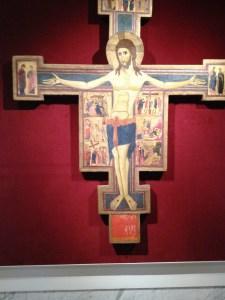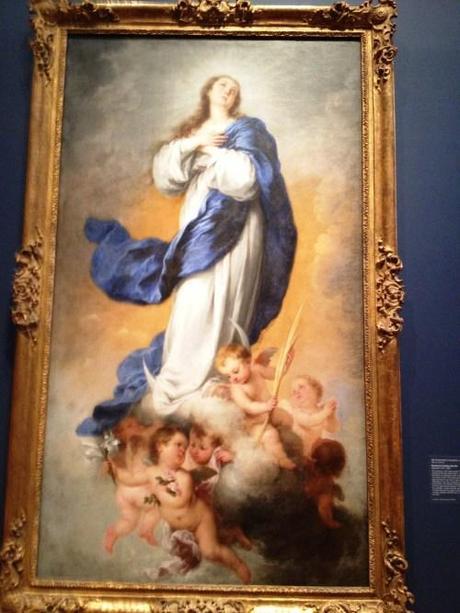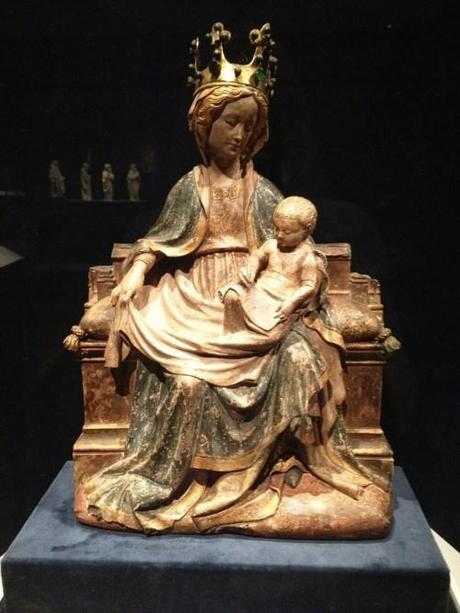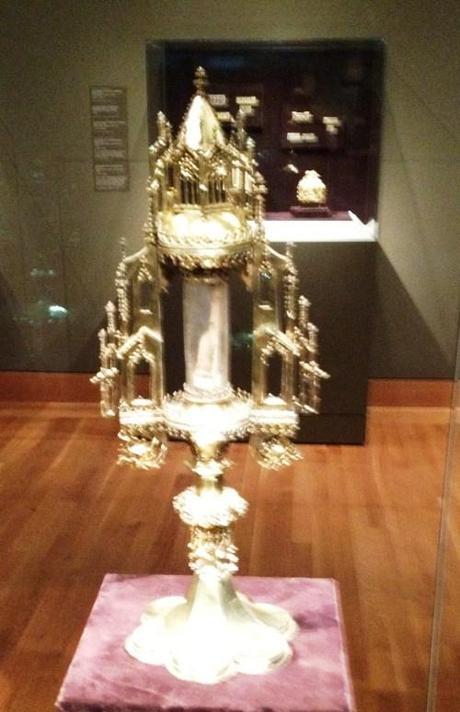Last week while we were in Cleveland, we visited the Cleveland Museum of Art. Thought I’d share some pictures of the beautiful art works we viewed.
———————————————————————————————

A Painted Crucifix from Pisa
The identity of the artist who painted the crucifix remains somewhat of a mystery, its style and format confirm that it was produced in the city of Pisa. The city was at the time a major center of culture and trade. From about 1000 until its defeat by Genoa in 1284, Pisa was one of the most powerful cities in the Mediterranean. Pisa’s famous campanile or “leaning tower,” as well as its cathedral and baptistery were all under construction at the time the Cleveland cross was being painted.

The Immaculate Conception, c. 1680
The doctrine of the Immaculate Conception maintains that the Virgin Mary was conceived free from sin, therefore ready to be the pure vessel for Christ’s birth. The Immaculate Conception enjoyed intense devotion in Spain during the 1600s, although it was only accepted as official doctrine in the 1860s. The abstract subject required artists to develop appropriate imagery. The crescent moon, for example, comes from the New Testament vision of Saint John the Evangelist (Revelation 12:1) of “a woman clothed with the sun, with the moon under her feet.”

Icon of the Mother of God and Infant Christ (Virgin Eleousa), c. 1425-1450
This type of icon is known as the Virgin Eleousa (Virgin of Tenderness) characterized by the touching cheeks of mother and child in a loving moment. The icon signifies Christ’s incarnation, suffering, and death for the sake of humankind. Three ornamental stars on the Virgin’s cloak are traditional symbols of her chastity; a blue cap covers her hair and protects her modesty. The child wears a pale green tunic and deep orange cloak, both highlighted in gold. The Christ Child holds a scroll tied with a ribbon, a symbol of the Gospels. This icon is from his period of greatest activity and pre-dates the collapse of Constantinople in 1453.

Enthroned Virgin with the Writing Christ Child, c. 1400
This sculpture belongs to a tradition of seated Virgins that were prominent in Netherlandish art in the decades around 1400, and by extension may be associated with the Valois courts at Paris, Dijon, and Bourges. The theme of the Christ child who writes into an open book or onto a vellum banderole emerged during the third quarter of the 14th century and had great appeal among ecclesiastical and aristocratic clients. It undoubtedly refers to the educating and nurturing role of the mother in teaching the child, but also to the future position of the adult Christ as author and teacher.

Monstrance with a Relic of Saint Sebastian, 1484
This Late Gothic monstrance (from the Latin monstrare, “to show”) is mentioned in the earliest inventory of Saint Blaise as “a large new monstrance containing relics of Saint Sebastian the martyr.” Judging from surviving receipts, the reliquary was made by Werner Korff, a local goldsmith, who received payments for silver and gilding at the end of 1484. The reliquary was first displayed on the altar of the church of Saint Blaise in a solemn penitential mass on June 4, 1484, in an effort to ward off the plague. A recent examination revealed that the relic is a human metatarsal bone (one of five long bones of the human foot) and that its owner seemed to have suffered from periostitis, a medical condition that affects the connective tissue surrounding the bone.
DCG

